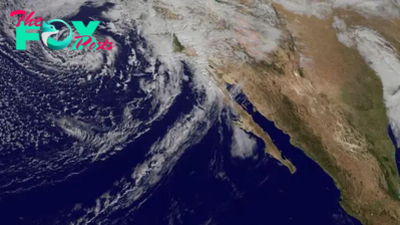Science
Asteroid 10 times bigger than the dinosaur-killing space rock smashed Jupiter's largest moon off its axis
Around 4 billion years ago, an enormous asteroid that was at least 10 times larger than the space rock that wiped out the dinosaurs smashed into Jupiter's massive icy moon, Ganymede. The cataclysmic collision was so devastating it created the largest impact crater in the solar system and knocked the supersized satellite off its axis, new simulations show.
Ganymede is Jupiter's third-closest major moon, orbiting the gas giant roughly once every seven days. It has a diameter of 3,270 miles (5,260 kilometers), according to NASA, making it the most massive of the solar system's many moons and larger than the planet Mercury. Just like Earth's moon, Ganymede is tidally locked, meaning the same side constantly faces Jupiter's swirling, storm-covered surface. Researchers believe the moon has a roughly 60-mile-deep (100 km) ocean hidden far below its icy surface.
In the 1980s, researchers discovered that large parts of the moon's surface were covered with concentric rings of narrow trenches, or furrows, surrounding the remains of what looked like a large impact crater on Ganymede's far side (the side facing away from Jupiter). Photos from subsequent visiting spacecraft, such as NASA's New Horizons probe, revealed the moon's scarred surface is the likely result of a massive asteroid collision that occurred around 600 million years after the solar system formed.
In the new study, published Sept. 3 in the journal Scientific Reports, researcher Naoyuki Hirata — an astronomer and planetary scientist at Kobe University in Japan — reconstructed Ganymede's ancient asteroid impact using computer simulations based on the moon's furrows. This enabled Hirata to precisely calculate the size of the rock that smashed into Ganymede for the first time. The simulations also showed how the impact likely knocked the moon off its original axis.
Related: The 10 weirdest moons in the solar system

Hirata estimated that the initial impact crater was up to 1,000 miles (1,600 km) wide, making it 10 times wider than Earth's largest impact structure — the Vredefort Crater in South Africa. This means Ganymede's crater was the largest known impact crater in the solar system's history. However, it did not remain this size for long as debris from the event quickly fell back to the moon's surface and filled in most of the hole, Hirata wrote.
Based on the size of the crater, Hirata estimates the asteroid responsible for birthing it would have been around 93 miles (150 kilometers wide) — or about as long as the state of Delaware. That would make it somewhere between 10 and 15 times larger than the Chicxulub meteor, which slammed into what is now Mexico around 66 million years ago and wiped out up to 80% of animal species on Earth, including all non-avian dinosaurs.
-

 Science4h ago
Science4h agoThe Polaris Dawn Mission Opens a New Chapter in Private Space Flight
-

 Science1d ago
Science1d agoNASA's newly unfurled solar sail has started 'tumbling' end-over-end in orbit, surprising observations show
-

 Science2d ago
Science2d agoBlinken Ends Latest Mideast Visit Without a Cease-Fire, Warning ‘Time Is of the Essence’
-

 Science2d ago
Science2d agoMassive helium reservoir in Minnesota could solve US shortage
-

 Science3d ago
Science3d agoSilver is being buried beneath the sea, and it's all because of climate change, study finds
-

 Science3d ago
Science3d agoSunspots surge to 23-year high as solar maximum continues to intensify far beyond initial expectations
-

 Science3d ago
Science3d agoEarth from space: Warped 'double rainbow' glory appears next to rare cloud swirls over Mexican island
-

 Science4d ago
Science4d agoEarthquakes can trigger quartz into forming giant gold nuggets, study finds



























